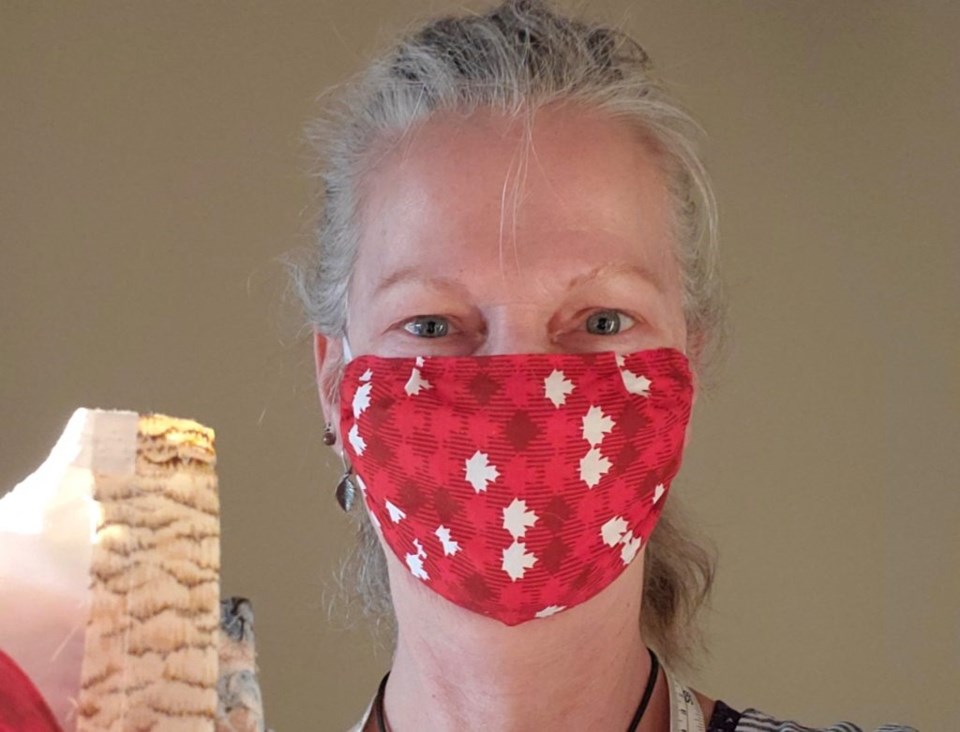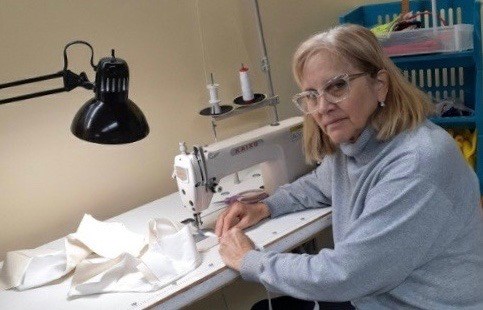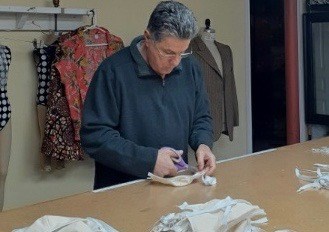
With a shortage of protective masks to help reduce the spread of COVID-19, two local groups of volunteers have been busy sewing fabric masks to be distributed where needed.
Their designs, materials and distribution are different, but their goals are the same — to help those most at risk from the virus.
Fran Boot began researching designs when her daughter, a mental health professional in the emergency department of a Toronto hospital, said she was concerned about not having a mask for protection.
Reports from those inside hospitals across North America indicate some are running short of masks and rationing them.
There are also families who use them for procedures routinely carried out at home, unrelated to the virus, Boot learned, and they can no longer access masks.
After extensive research, and input from those who use them, Boot has settled on a design of a blended-cotton pocket, with a HEPA filter insert made from HEPA vacuum cleaner bags. She and her sister, also a sewer, along with a group of about 25 others, have been producing masks, with a distribution list that includes a Toronto hospital, Hotel Dieu Shaver, doctors who have asked for them, volunteers at a COVID-19 clinic, personal support workers who go from home to home in their work, and vulnerable patients, says Boot.
While a welcome news report says masks have arrived from China, there is still a question at this point of how many have been sent, how far they will go to covering the shortage, and how long distribution will take. Also unknown is how long the need for masks will continue, and as a result, groups have sprung up across the country and in the U.S., making fabric masks to cover the shortage protective gear.
The easy-to-make pattern Boot has chosen, with the filter, are not N95, medical-grade masks, but they do filter tiny microns. If N95 masks are not available, they provide good protection, “and something is better than nothing,” says Boot. “We hope there are truckloads of N95 masks on their way. But in the meantime we want to fill the gap, and we feel this is the best possible substitute.”
For now they have sufficient materials, thanks to some sewers who are quilters, “and who always have odds and sods of supplies on hand,” says Boot. The group is limiting the number of sewers to ensure as clean an environment as possible, she adds. “We are making every mask as if we were making it for a loved one.”
Those who are given the masks receive four disposable filters to go with it, and if necessary, they can hopefully replace them by purchasing the HEPA vacuum cleaner bags.
For anyone interested in more information about the fabric masks being made by local volunteers, visit the Facebook page Niagara COVID Mask Needs, at https://www.facebook.com/groups/229577075102728/.
Meanwhile, another group of sewers is busy making masks from a different design, and also for a different destination.
Kathy Scozzafava is a sewer in the costume department of the Shaw Festival. The work of her department has been put on hold, with the start of the season delayed and non-essential workers staying home.
She continues to be paid, and is working on some costumes in her home workshop, knowing that once work resumes and productions are getting ready to open, there will be a rush to finish costumes. But when she heard of the need for masks, she quickly jumped in and volunteered to help.
The group she is working with distributes pre-cut materials to take home to sew, and then the finished product is dropped off at a Beamsville location.
“I have a well-equipped studio in my house, as do a lot of the Shaw sewers. We’ve been talking to each other and video-chatting,” she says. One of them learned of the Beamsville operation, and wanting to help, reached out to some of the other sewers.
Kathy’s husband Ross has even been put to work clipping threads for her, she says.
The masks are cloth on the outside, with a microfibre shield lining on the inside. She can make about 100 a day, and then returns them to pick up more kits.
The fabric is being cut in very sanitary conditions, the kit is microwaved before it’s sent out to be assembled, and the completed masks are microwaved again to further sanitize them, she says.
While she is not sure how many of the 35 to 40 Shaw sewers are involved, but as more hear about the work, they are volunteering as well.
“This story is about the mobilization of Shaw sewers who are jumping on board as we’re waiting to go back to work,” she says.
There is a small stipend per mask paid by the distributor, she adds, but that will be donated to something COVID-19 related. “We are definitely volunteering our time.”

